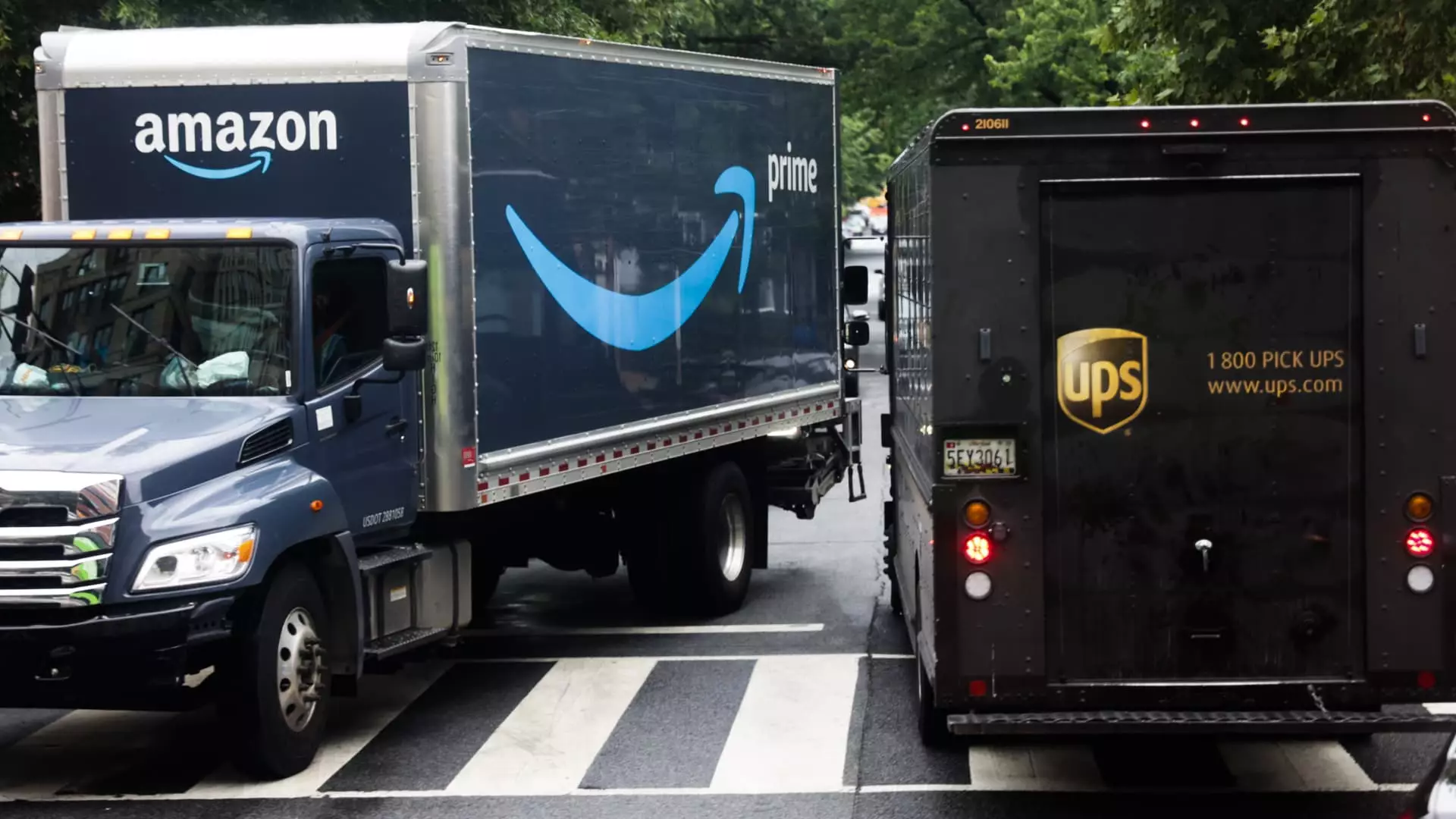The financial landscape for United Parcel Service (UPS) took a significant hit last Thursday, as its stock plummeted over 15%. This decline followed the company’s announcement of a revised revenue forecast, coupled with a dramatic decision to reduce parcel deliveries for its most substantial client, Amazon, by over 50%. This adjustment was brought to light during UPS’s fourth-quarter earnings report, wherein the firm revealed that it had reached a preliminary agreement with Amazon that would lead to this reduction by the latter half of 2026.
UPS’s bleak outlook for the upcoming year paints a concerning picture, with the company forecasting a revenue drop from $91.1 billion in 2024 to $89 billion in 2025. Analysts had anticipated a more optimistic figure of $94.88 billion for 2025, further exacerbating investor alarm and skepticism regarding UPS’s operational future. The situation was compounded by a disappointing fourth-quarter performance, whereby UPS reported revenues of $25.30 billion, falling short of the expected $25.42 billion.
UPS’s struggle in maintaining a profitable relationship with Amazon illustrates a broader issue within the logistics industry. While Amazon remains UPS’s largest client, it is also characterized as a margin-diluting entity that has affected the company’s domestic business profitability. Carol Tomé, the CEO of UPS, underscored the need for UPS to innovate and adapt its operational strategies to maintain competitiveness within an evolving market.
The reduction in deliveries to Amazon is not merely a logistical adjustment; it reflects deeper strategic shifts within UPS as the firm recalibrates its business model to focus on more profitable areas. Tomé emphasized a pivot towards segments such as healthcare, small businesses, international shipping, and business-to-business services—areas perceived as more lucrative compared to the consumer delivery market that Amazon dominates.
Amazon’s response to this decision highlights the evolving dynamics between these two giants. A spokesperson from Amazon indicated the company’s understanding of UPS’s operational needs while reaffirming Amazon’s commitment to its diverse transportation network, which includes other major carriers like FedEx and the U.S. Postal Service. Interestingly, even before UPS’s announcement, Amazon had extended offers to increase UPS’s delivery volumes, highlighting a complex relationship where mutual dependence is juxtaposed with competitive pressures.
As Amazon steadily fortifies its logistical capabilities—an effort catalyzed by past fulfillment challenges—its retreat from reliance on UPS could set a precedent for a transformative shift in their long-standing partnership. The e-commerce behemoth has cultivated its in-house network of carriers, trucks, and facilities since a holiday season delivery debacle in 2013, demonstrating a growing appetite for self-sufficiency in logistics.
Seeking Efficiency in a Cost-Control Environment
In response to these challenges, UPS has embarked on a multi-year initiative to restructure its operations and booster efficiency, aiming for savings of about $1 billion. In light of recent workforce reductions, including the layoff of 12,000 employees, it is clear that UPS is committed to adapting its operations in a stagnant market. The relationship with dynamic new entrants like Temu and Shein has showcased UPS’s ability to pivot and capture new market opportunities.
However, the necessity of cutting costs has opened the company up for scrutiny over its long-term viability, especially as it juggles reduced revenue forecasts while attempting to enhance its business foundation. As UPS navigates these turbulent waters, its forward trajectory hinges critically on its ability to streamline operations while finding better avenues for profitability.
As UPS braces for significant operational transitions and faces uncertainty in its revenue trajectory post-Amazon, the broader implications for the industry are profound. The firm’s commitment to restructuring presents a chance to enhance its position, but only time will tell whether these reconciliations will yield the benefits required to regain investor confidence. The dynamics between UPS and Amazon epitomize the ongoing transformation within the logistics sector, calling for adaptability, diversification, and a clear vision as these titans seek to navigate a complex and rapidly changing commercial environment.

